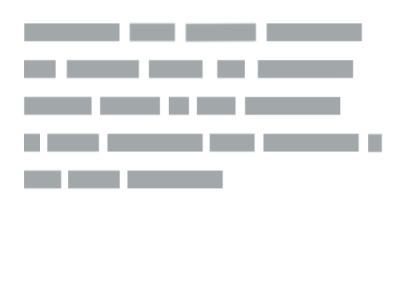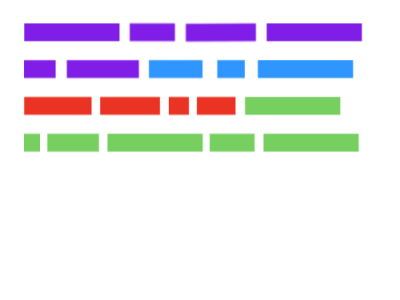
DESCRIPTION
Create a working structure for your story by doing something you do regularly: telling a story. Get the structure of your story by just talking about it. It’s as easy as that!
USED BY
Mainly by companies whcih have to deal with complex topics in a fast manner, such as consultancy companies or PR agencies.
Approximately needed time
- Step 1: 2 hours
- Step 2: 2 hours
- Step 3: 2 hours
- Step 4: 2 hours
- Step 5: copy&paste
- TOTAL: 8 hours
METHOD
MATERIAL YOU COULD NEED: Post-It or paper, some colored marker.
STAKEHOLDER GOOD TO KNOW: Everyone involved into to set target and call to action.
STEPS
one
0%THE WHAT IS FIRST: If you don’t know what you want to tell, who should?
First, you need to know the reason for your story. WHAT is your goal? Do you want people to buy your product? Do you want your management to grant resources or budget? Do you want somebody to do something?
Write down, short and crisp, a summary of what you would like to tell.
Simulate how you tell about the content of the presentation to somebody new to the topic. What would you tell? What is worth mentioning? What would be the right words? What would a short and understandable version of your story be?
Supporting methods: Customer survey & interviews and methods like “letter from the future”
Example: This story us about how we won the car race on first attempt. We will show how we did. Which challenges we faced. How we solved them.
two
0%SPLIT, COMBINE, ARRANGE: Shorten the right messages for a structure.
The summary you wrote in step one ideally consist of (very?) short sentences. Transfer each sentence as title to a slide. It does not matter (for now) if the slide deck doesn’t have the quantity of slides you expected.
One sentence equals one slide, and the slide title equals the content you will have to fill into it afterward.
Hint: maximum of 25 words or 150 letters per slide. If you can’t transport your message in short, you need to understand it better. 😉
Example:
- [We won the car race on first attempt] becomes [We build the best racing car ever made].
- [We will show how we did it] becomes [By doing/optimizing abc].
- [Which challenges we faced] becomes [The risk is abc].
- [How we solved] them becomes [Our Solution is abc].
three
0%ARRANGE & EDIT & RE-ARRANGE: give your slides the adapted story structure.
If single slides aren’t needed for your audience, you may combine them or leave them out. You may also, if necessary, split some sentences if the detail level is required for your call to action, or even add one. Change wording (slightly) if needed. But whatever you do, keep the summary structure to keep the storyline.
You may add a subtitle if needed, but challenge HOW the content needs to be shown, to reach your audience.
Hint: Always short and crisp, because the more they CAN read, the less they WILL listen to you.
Supporting methods: Customer feedback, a/b testing, post-it-sorting method
Example:
- Slide 1: We build the best racing car ever made.
- Slide 2: By doing/optimizing abc.
- Slide 3: The risk is abc.
- Slide 4: Our Solution is abc.
- NEW slide 5: Therefore we need abc.
four
0%SOME NEED & CALL2ACTION NOW: Every story needs a goal.
Phrase which NEED you want to solve at the beginning and describe which CALL2ACTION at the end you of your presentation you want to achieve.
Hint: Last slide minimalistically recaps the main content and describes the next step by pointing out I) the 3 most important KPIs, II) 2 supporting messages for the WHY and III) your call2action.
Re-challenge your slides and especially your titles, if they still make sense for your audience and the story you want to tell.
Hint: If you would print out your story deck, and lay the slides in front of you, showing only the titles, you would read the summary of what you want to say and achieve. Does the story get told?
Supporting methods: post-it-sorting method, stakeholder or sparing partner feedback, customer feedback
Example:
- NEW slide 0 (NEED): We want to participate in car races
- Slide 1: We build the best racing car ever made.
- Slide 2: By doing/optimizing abc.
- Slide 3: The risk is abc.
- Slide 4: Our Solution is abc.
- Slide 5: Therefore we need abc.
- NEW slide 6 (C2A): To get our customer to do abc.
five
0%CREATE THE FORGOTTEN FUNDAMENT: Every short story needs a base line, which goes to the backup.
As you work on parameters, data, and content, to create your slides, collect and add them to the end of your slide deck.
Hint: You always first need the data, knowledge and information before you reduce it to what is need accordingly to the slides you defined before.
Example:
- Slide 0: We want to participate in car races
- Slide 1: We build the best racing car ever made.
- Slide 2: By doing/optimizing abc.
- Slide 3: The risk is abc.
- Slide 4: Our Solution is abc.
- Slide 5: Therefore we need abc.
- Slide 6: To get our customer to do abc.
- Slide 7: Backup KPIs
- Slide 8: Backup Researches
- Slide 9: Backup Resources
- etc.
visual
0%Let’s use some visuals to support every single step.








add
0%PROMINENT BRANDS USING IT
McKinsey, Boston Consulting, Deloitte, etc…




